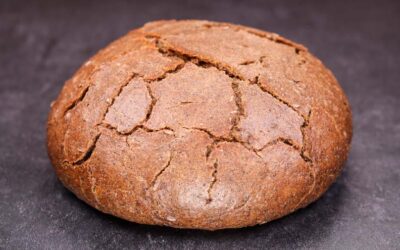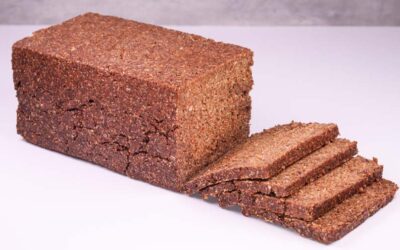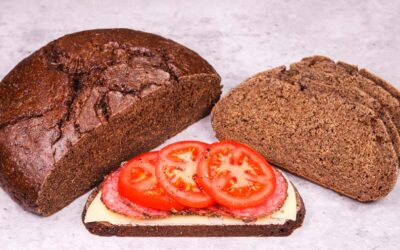The inspiration for this recipe came from a comment by our resident bread guru Kevin. He mentioned that he’s working on a rye ciabatta, and that sparked an idea in my mind. I started writing the recipe right away. Seeing what I made and what Kevin has posted on our Flick group I can say my bread is quite different. His one is definitely more of a ciabatta. Mine is more of a roll made using some ciabatta making techniques.
Still, it’s a great bread and it is made using one of my favourite doughs ever. It’s just another application for it if you don’t want to stick to making loaves. There is another version which was turned into a breakfast muffin that worked really well too.
That’s what breadmaking is all about for me – experimentation. There can be infinite adjustments made to any dough and it can be shaped and baked in every which way. And rarely will it fail because it’s so forgiving. No matter what you do it will still be at least edible in the end. And if you do it right, then it will look good too.
The best lesson from this video for me was the seeded crust. Heavily brushing the dough with water and then firmly pressing it into a bed of seeds made the seed topping fuse with the dough. This is by far the best method I have used to ensure that seeds remain stuck to the surface of the bread.
Watch the video down below for detailed instructions.
Ingredients
For the scald –
30g (1oz) whole rye flour
18g (0.64oz) malted rye powder (optional)
30g (1oz) plain mashed potato
6g (0.21oz) caraway seeds
120g (4.25oz) boiling water
For the main dough –
120g (4.25oz) water*
3g (0.1oz) instant dry yeast or 3.6g (0.12oz) active dry yeast or 9g (0.31oz) fresh yeast
6g (0.21oz) salt
12g (0.42oz) barley malt syrup or other sweet syrup of your choice
180g (6.34oz) white bread flour
90g (3.17oz) whole rye flour
*To learn more about dough temperature control click here.
To top –
Sunflower seeds or any seeds that you like.
If you are using active dry yeast, then you may need to let it sit in the water for 10 minutes before adding the other ingredients or else it could take a lot longer to raise the dough.
Method
- Make the scald. In a small bowl combine the rye flour, malted rye powder, mashed potato, caraway seeds, and boiling water. Mix until smooth. Cover and leave to cool down. You can make this a day a head of time and you can keep it in the fridge.
- Make the dough. In a large bowl combine the water, yeast, salt, syrup, and scald. Mix well. Add the white flour and mix again. Add the rye flour and mix to a dough. *Desired dough temperature 24C – 25C (75F – 77F). If your dough is cooler, then leave it out at room temperature before the first fold.
- Cover and rest for 15 minutes.
- Fold #1.
- Refrigerate for 15 minutes.
- Fold #2.
- Cold ferment for 12 – 24 hours.
- Heavily brush the surface of the dough with water. Tip the dough out on a tray filled with seeds. Press the dough down firmly. Try and make it as square as possible.
- Trim the edges of the dough and cut the dough into 4 equal pieces. Use the scraps the make a dough ball.
- Place the rolls on a non-stick paper lined tray.
- Final proof will take around 1.5 hours.
- Bake with steam in a pre-heated oven at 180C (356F) fan on for 20 minutes. I choose to have the fan on because it browns the rolls evenly on all sides. My oven only has one heating element. You may not need to do this. Alternatively, bake at 200C (392F) fan off.
- Take the rolls out and spray them with water all over.
- Bake for another 5 minutes. This moistening and final baking step will make the crust nice and soft.
Leave to cool down and enjoy!
Keep in mind that the conditions in each kitchen are different, so fermentation times may vary for you. It is up to the baker to control the bread and react accordingly.
Your oven may be different too, so your baking time may vary.
Watch the video here



